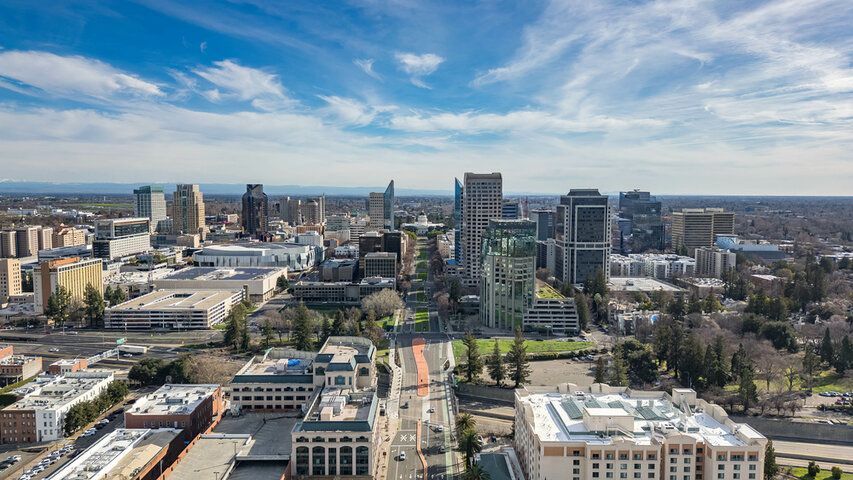Sacramento: More Than Just the Capital – A City of Surprising Stories

Fun Facts About Sacramento CA. Sacramento, California often gets overshadowed by the glamour of Los Angeles and the iconic appeal of San Francisco. However, this vibrant city, located at the junction of the Sacramento and American Rivers, boasts a rich history, innovation, and a quirky charm. It is not only the political heart of the Golden State but also a city filled with captivating stories and unique features that make it an intriguing destination and a great place to live.
Why is Sacramento the Capital of California?
The journey to becoming California's capital was not a straightforward one for Sacramento. The state's early years were marked by a sort of "traveling capital," with the seat of government bouncing between several cities before settling permanently.
- Early Nomadic Capital: When California achieved statehood in 1850, the capital briefly resided in San Jose. However, the facilities there were deemed inadequate. The legislature then moved to Vallejo, but conditions were still unsatisfactory. Benicia briefly held the title, offering a new statehouse, but it too proved to be a temporary solution due to its isolated location and lack of amenities.
- The Gold Rush Influence: The mid-19th century was dominated by the California Gold Rush, and Sacramento was at its epicenter. The city served as the primary supply hub for miners heading to the Sierra Nevada foothills. Its strategic location at the confluence of two major rivers provided vital transportation routes, making it a bustling economic center. This rapid growth and commercial significance made it a strong contender for a permanent capital.
- Financial & Logistical Appeal: Sacramento's burgeoning wealth and infrastructure, fueled by the Gold Rush, made it an attractive choice. Local businessmen and land developers, including the influential John Sutter Jr. and the "Big Four" railroad magnates, actively lobbied for the city. They offered land and financial incentives to build necessary government facilities. The city's relatively central location within the growing state, coupled with its river access, was also a key logistical advantage.
- A Permanent Home: In 1854, after much deliberation and several temporary moves, Sacramento officially became California's permanent capital. The first State Capitol building was completed in 1869, solidifying its role. The current magnificent State Capitol building, a stunning example of Neoclassical architecture, was largely completed by 1874 and stands as a testament to the city's enduring status. The stability it offered after years of relocation was highly valued, and its economic prominence ensured it could sustain the needs of a growing state government.
Five Interesting Facts About Sacramento, CA
Beyond its capital status, Sacramento holds some truly unique distinctions:
- The "Farm-to-Fork" Capital of America: Sacramento proudly declares itself the "Farm-to-Fork Capital," and for good reason. It's situated in the heart of one of the world's most productive agricultural regions, the Central Valley, surrounded by vast farmlands. This direct access to fresh, high-quality produce, meats, and wines allows local restaurants to source ingredients directly from nearby farms, often on the same day. This commitment to local sourcing has fostered a vibrant culinary scene that emphasizes fresh, seasonal, and sustainable dining experiences, making it a true foodie paradise.
- Home to the Deepest Water Port in the State (Without Being on the Ocean): While Sacramento is located inland, approximately 90 miles northeast of San Francisco Bay, it boasts a deep-water port. The Port of Sacramento is connected to the San Francisco Bay via the Sacramento River and the Sacramento Deep Water Ship Channel. This incredible engineering feat allows ocean-going vessels to reach the city, making it a crucial hub for agricultural exports and other goods, truly defying its landlocked appearance.
- The Pony Express's Western Terminus: For a brief but iconic 18 months (April 1860 - October 1861), Sacramento served as the western terminus of the legendary Pony Express. This daring mail service, which used relay riders and horses to deliver mail across the vast American West, ended right in Sacramento. Today, Old Sacramento State Historic Park preserves a significant portion of this history, including the original B.F. Hastings Building which housed the Pony Express office.
- A City Built on a City (Underground Sacramento): Due to devastating floods in the mid-19th century (most notably the Great Flood of 1861-62), large portions of downtown Sacramento were literally raised. Buildings were lifted, and streets were filled in, creating an elevated city level. This left an "underground" city beneath the modern streets. Today, guided tours of "Old Sacramento Underground" allow visitors to explore these buried streets, storefronts, and alleyways, offering a fascinating glimpse into the city's resilience and its unique architectural response to environmental challenges.
- More Trees Than Any Other City in the World (Except Paris!): Sacramento is often called the "City of Trees," and while precise rankings can vary, it consistently vies with Paris for the title of the city with the most trees per capita globally. Its urban canopy is truly magnificent, offering ample shade from the hot California sun and contributing significantly to the city's beauty and air quality. The vast number of mature trees, including majestic elms, oaks, and sycamores, provides a lush, green environment that is rare for a capital city.
More Fun Facts About California's Capital
- Gold Rush Legacy: The city's explosive growth began with the discovery of gold at Sutter's Mill in nearby Coloma in 1848, an event that triggered the California Gold Rush. John Sutter's Fort, an early agricultural and trading post, was one of the first European settlements in the Sacramento Valley and is now a state historic park.
- A River City: The Sacramento and American Rivers converge here, offering numerous recreational opportunities including boating, kayaking, fishing, and miles of picturesque bike trails along their banks.
- Museum Mecca: Sacramento boasts an impressive array of museums, including the California State Railroad Museum (one of the largest and best railroad museums in North America), the Crocker Art Museum (the oldest art museum west of the Mississippi), and the California State Capitol Museum.
- Diverse Demographics: Sacramento is one of the most ethnically diverse cities in the United States, celebrated for its rich cultural tapestry and vibrant communities.
- Hot Summers: Be prepared for the heat! Sacramento experiences long, hot, and dry summers, with temperatures frequently soaring into the 90s and often exceeding 100 degrees Fahrenheit. The "Delta Breeze" offers some evening relief.
From its pivotal role in the Gold Rush to its current status as a culinary hotspot and a verdant urban forest, Sacramento is a city with depth, character, and countless stories waiting to be discovered. It's a testament to California's pioneering spirit and a vibrant center that continues to evolve while honoring its remarkable past.
The Ibrahimzada Property Trust offers a specific focus on providing comfortable and conveniently located apartment living. Their specialization lies in curating properties situated near vibrant urban amenities such as parks, nightlife, restaurants, and shops, all while prioritizing exceptional maintenance, friendly service, and maintaining affordable rental rates. For those seeking a well-located and hassle-free apartment experience, The Ibrahimzada Property Trust presents a compelling option.



